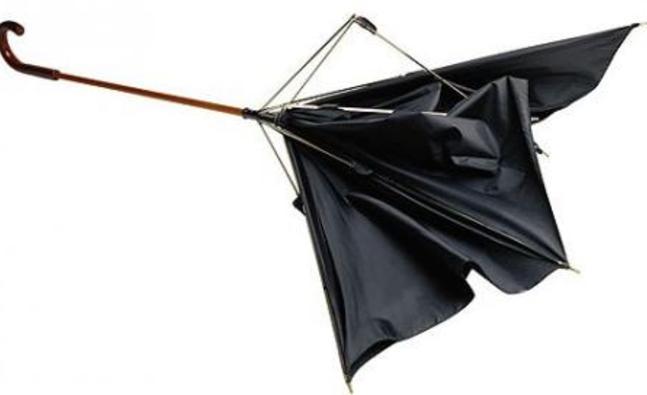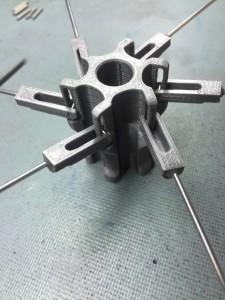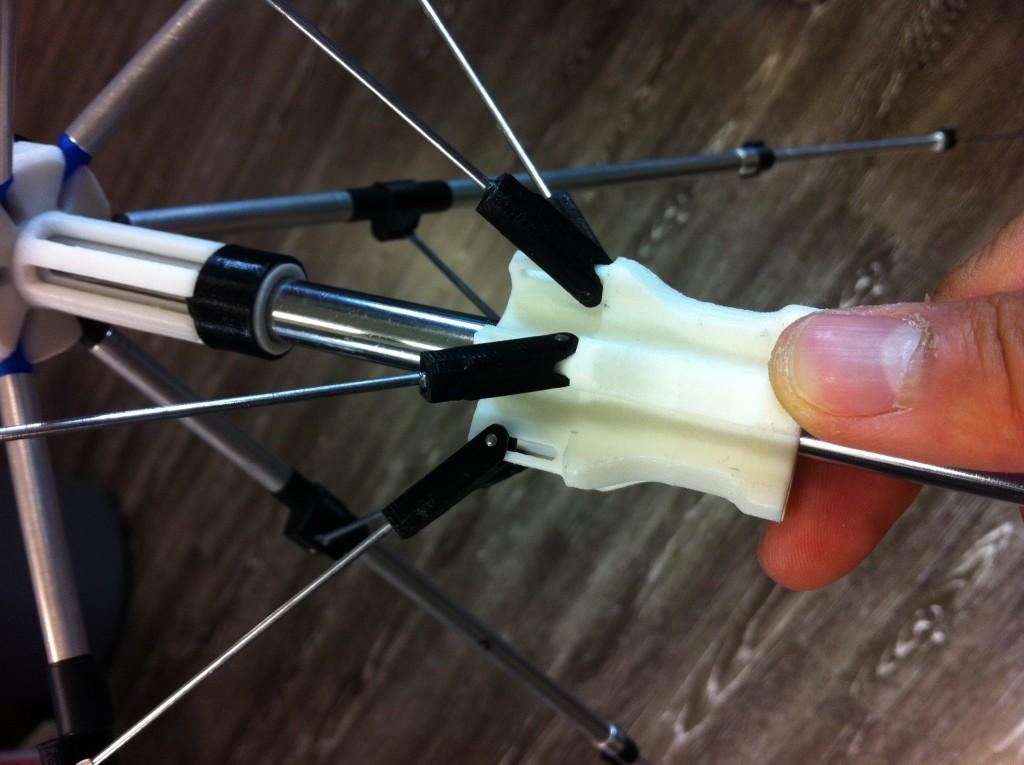There’s very little anymore that we can’t say that 3D printing has improved, but are we taking it a bit too far when we suggest that it might help keep you dry on a rainy day? No! Of course not!
 Don’t worry, this doesn’t involve hefting your printer over your head as you make a run from one building to another. Instead, 3D printing has once again been an integral part of the process of developing a better umbrella. You’ve seen it before in the fantastically conceived Kazbrella, an invention that strives to address all that is tragically wrong with the traditional umbrella. Now, another group has taken a stab at improving the umbrella experience with a creation called the Cypress Umbrella.
Don’t worry, this doesn’t involve hefting your printer over your head as you make a run from one building to another. Instead, 3D printing has once again been an integral part of the process of developing a better umbrella. You’ve seen it before in the fantastically conceived Kazbrella, an invention that strives to address all that is tragically wrong with the traditional umbrella. Now, another group has taken a stab at improving the umbrella experience with a creation called the Cypress Umbrella.
The Cypress Umbrella gets right to the heart of one of the umbrella’s fundamental flaws: its tendency to flip out under the pressures of high wind. As someone living in the Carolinas right now, the combination of high wind and continual rain is something very much on my mind. There is a visceral anger that I feel when my umbrella betrays me by rejecting its useful shape and becoming something almost worthy of being sculpture, maybe titled UNworkable Canvas with eXo-Skeleton.
 The solution to this woe is proposed by a team of designers out of Vancouver, a city with a particularly rainy climate and so something approached with a dedication born of unwanted soakings. Cahay Ho and Kevin Truong decided it was time to tackle the umbrella dilemma. Too often, the inverted umbrella design problem is approached with efforts to make the frame stronger, sturdier, heavier, and/or thicker. However, there is only so far you can go with that kind of solution until you are lugging around an object with all the portability of a sack of bricks, making it easier to just buy a tent and cut a pair of holes for your feet.
The solution to this woe is proposed by a team of designers out of Vancouver, a city with a particularly rainy climate and so something approached with a dedication born of unwanted soakings. Cahay Ho and Kevin Truong decided it was time to tackle the umbrella dilemma. Too often, the inverted umbrella design problem is approached with efforts to make the frame stronger, sturdier, heavier, and/or thicker. However, there is only so far you can go with that kind of solution until you are lugging around an object with all the portability of a sack of bricks, making it easier to just buy a tent and cut a pair of holes for your feet.
 Having worked as a member of the team that developed the Formula SAE car, Ho decided instead to take an approach that would build in greater flexibility, reminiscent of the race car’s suspension system. Truong, no stranger to automotive design, immediately saw the benefits of this idea and they worked together to develop the independent suspension system that would rescue them from the cycle of hopeful anticipation and soggy dismay experienced with all previous umbrellas.
Having worked as a member of the team that developed the Formula SAE car, Ho decided instead to take an approach that would build in greater flexibility, reminiscent of the race car’s suspension system. Truong, no stranger to automotive design, immediately saw the benefits of this idea and they worked together to develop the independent suspension system that would rescue them from the cycle of hopeful anticipation and soggy dismay experienced with all previous umbrellas.
There is a reason why umbrella design has not changed much over the past century. It’s a project that is a great deal more complicated that it might initially appear. Luckily, Ho and Truong had access to the Vancouver Hack Space (with its entertaining acronym VHS, a tip of the hat to obsolete technology).
Over a period of 10 months, the duo worked tirelessly to bring their dream to life, as they explained:
“We listed every feature that we liked amongst current umbrellas and everything we would want in ours. Working out of the Vancouver Hack Space, the past 10 months has been an endless cycle of design -> fabricate -> test -> break -> repeat. We had to redesign almost every component. Leveraging the strength of a tubular profile, we came up with a new architecture for how the ribs would expand and contract. Unhappy with how an umbrella flips inside out so easily, we invented an independent suspension systems to defend against strong winds.”
None of this would have been possible without 3D printing…or at least, it wouldn’t have been ready for the rainy season any time soon.
In an interview with 3DPrint.com, Truong described the role played by 3D printing:
“3D Printing is essentially the catalyst that accelerated our development stages. Normal prototyping methodology would be to design and then send drawings out for fabrication. This process is time consuming and expensive. With 3D printers, we can design, test, and make changes right away. In our current umbrella, aside from the stem, ribs, and pins, the rest of the umbrella’s frame is 3D printed: the clips, the slider, hubs, handle…we even 3D printed springs.”
They were able to undertake nearly a dozen design iterations just with the main slider, all because of the freedom to experiment allowed by 3D printing. In the end what it boils down to is a better umbrella, a project that has been neglected for far too long.
I can’t wait to see which one of life’s irritations this dynamic duo sets out to conquer next. Let us know your thoughts on this story in the 3D Printed Cypress Umbrella Forum thread on 3DPB.com.
Subscribe to Our Email Newsletter
Stay up-to-date on all the latest news from the 3D printing industry and receive information and offers from third party vendors.
You May Also Like
3D Printing Unpeeled: New Arkema Material for HP, Saddle and Macro MEMS
A new Arkema material for MJF is said to reduce costs per part by up to 25% and have an 85% reusability ratio. HP 3D HR PA 12 S has been...
3D Printing News Briefs, January 20, 2024: FDM, LPBF, Underwater 3D Printer, Racing, & More
We’re starting off with a process certification in today’s 3D Printing News Briefs, and then moving on to research about solute trapping, laser powder bed fusion, and then moving on...
3D Printing Webinar and Event Roundup: December 3, 2023
We’ve got plenty of events and webinars coming up for you this week! Quickparts is having a Manufacturing Roadshow, America Makes is holding a Member Town Hall, Stratafest makes two...
Formnext 2023 Day Three: Slam Dunk
I’m high—high on trade show. I’ve met numerous new faces and reconnected with old friends, creating an absolutely wonderful atmosphere. The excitement is palpable over several emerging developments. The high...































